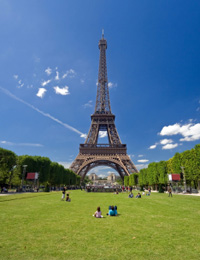Tips for Driving in France

If you’ve decided to go to France on a driving holiday, there are a number of essential tips that you should know to keep yourself safe and happy while travelling. Many people think that the only real knowledge you need when travelling around France is to remember to drive on the right hand side of the road. Sadly, it’s just not that easy and the laws there are very strict. Familiarise yourself with local road rules before you go and you’ll have a stress free time when you get there.
Essential Items for Driving in France
You can drive in France on a UK licence, so long as it is a full UK licence. You should also have your vehicle documents and insurance with you and if you’re not driving your own car, you may need written permission from the registered owner. From 1 October 2008, it is mandatory in France for all vehicles to carry a reflective jacket and a warning triangle. Make sure that you have these in your car – if you don’t you could face an on the spot fine. An extremely important note to consider is that in France the minimum age for driving is 18. This means that even if you have a full UK licence at age 17, you won’t be able to legally drive in France. If you do, you may be fined or your car may be impounded, leading to a large fine. Seat belts are also obligatory in both the front and rear of your car, so ensure everyone is buckled up.
Speeding Laws in France
Speeding laws are extremely tough in France and although there are generally higher speed limits in the UK, this of course means there may be higher risk of accidents, especially for people who are unfamiliar with the roads.
- Motorway Speeds – 130 km/h (110 when wet)
- Open Road – 90 km/h (80 when wet)
- Dual Carriageway – 110 lm/h (100 when wet)
- Town – 50 km/h
Speeding will often result in an on-the-spot fine and if you’re found to be travelling at more than 25 km/h above the speed limit for the road, you may even have your licence confiscated there and then. If this happens, your vehicle may temporarily be impounded as you will no longer be able to drive without your licence. Radar detectors are illegal in France, so make sure that you remove yours before travelling there. Even if you don’t have it switched on, it’s still illegal to have one in your car and should you be caught with one, you will have the device removed and may even be fined or have your vehicle taken from you. It’s extremely important to follow these rules as it can be a logistical and financial nightmare if you are fined.
Fuel Tips in France
As in the UK, France has all different types of fuel available, but if you have an LPG car, you may find it difficult to find stations to fill up on. Plan your route in advance and print out the stations that have LPG available. France no longer has leaded petrol pumps, so if you’re still driving an older car with leaded petrol, you may need to carry petrol in a can. Many out of town service stations aren’t open during noon to 3pm so ensure you’ve planned where you’ll be making stops.
Priority to the Right
In many built up areas of France, the rule still exists where you give priority to traffic coming from the right. This is known as ‘Prioriti doite’ and should be followed at all times. The only time you would ignore this rule is if there is a yellow diamond which shows that you have priority at that time. Many people get confused at roundabouts in France, but the general rule is that you should give priority to traffic that is already on the roundabout. This isn’t that confusing and is similar to the UK. Simply give way to traffic coming from the left as you enter the roundabout and you should be fine.
Quick Tips for Driving
- Plan your route in advance
- Take a map or sat nav system with you
- Carry spare change for tolls
- Take all your car paperwork with you in the car and a spare set of keys
- Learn local rules of the road before you go
- Children under 10 aren’t allowed in the front
- Fit headlamp converters
- Seat belts are compulsory
 Add to del.icio.us
Add to del.icio.us